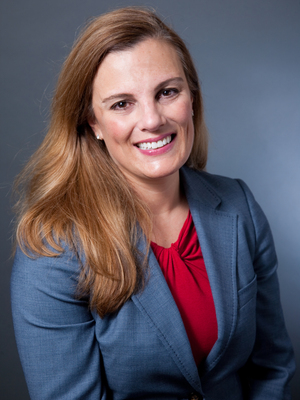Workforce diversity benefits not only businesses and employees, but the customers and communities they serve. And as an employer recognized nationally by Forbes, BlueCross has made cultural competency and representing our members key business imperatives.
Part of our continued evolution as a mature diversity and inclusion employer is our willingness to provide platforms for other ideas and perspectives to take root and benefit Tennessee businesses and their people. One such platform is our annual Power of We Workforce Diversity Conference.

Ahead of this year’s conference, we spoke with one of our keynote speakers, McKinsey & Company’s Jennifer Santoro Stanley, about building an interconnected approach to company culture and the future of diversity, equity and inclusion.
Before we dive into the specifics of your session, can you share a bit about yourself and your role at McKinsey?
Jennifer: Thanks so much for the opportunity to participate. I have the privilege of serving as a partner at McKinsey, where I lead our sales and channel management work in North America, serving a range of organizations from Fortune 100 to family-owned businesses.
Ultimately, our goal at McKinsey is to serve as impact partners for our clients to drive sustainable, inclusive growth.
In addition to my role, I’m passionate about diversity, equity and inclusion (DE&I) in business, and I’m also a Tennessee native. So I couldn’t be more thrilled to join thought leaders to discuss this topic in my home state in November.
What does DE&I mean to you, and how do you foster an inclusive culture in your current role?
Jennifer: I would say DE&I may be the most important issue from both a moral and economic standpoint, because we know that companies that embrace DE&I have more engaged employees and typically outperform their peers financially and operationally.
DE&I is multidimensional, as well. Top of mind for me and my organization are:
- Inclusivity and intentionality around the hiring, retaining, and developing of talent
-
Active encouragement and acknowledgement of sponsorship and allyship to underrepresented individuals and communities
- Intentional staffing practices when building project teams
To provide some context around that point, my work is project-based, which means I’m constantly assembling teams for specific assignments. In this model, it’s so important to attract and retain individuals with relevant skills and capabilities who may be outside my typical networks, so I ask colleagues for help identifying those potential teammates. Staffing in this way creates opportunities for colleagues excited about certain topics and who bring different and valuable experiences for our clients.
- And finally, proper education and accountability for business leaders to keep DE&I (beyond just gender, too) at the forefront of recruitment practices
We must strive to continuously push for the removal of unconscious bias in hiring processes and in the elevation of employees to leadership roles.
At McKinsey, DE&I is embedded into our DNA not only in how we work, but in our external efforts, including our Women in the Workplace report, Generation and many other programs.
I’ve been able to play a role in our innovative internal REACH program to help increase female leaders’ visibility and exposure in the marketplace, offering them publication and speaking opportunities. Mentoring the next generation of female leaders is a great point of pride for me.
Looking ahead to the Power of We conference, what will your session be about?
Jennifer: I don’t want to give too much away, but I’m excited to share findings from our annual, industry-leading Women in the Workplace report, published in collaboration with LeanIn.org.
Women in the Workplace is a seminal piece of research. While progress has been made, we still have so much more to get done, since there’s still far too wide of a gap between intent and outcomes.
Can you share any key takeaways from your session that those unable to attend can start to put into place?
Jennifer: I hope leaders will come away with a holistic approach to DE&I and a clear path forward to drive long-term, positive outcomes for all stakeholders. Specific action items include:
- Organizational policies and processes to build lasting DE&I programs, strengthen culture, and ensure DE&I as a unique aspect of an organization
- Individual contributions to enable DE&I growth, such as actions to facilitate mentorship and allyship
- Setting near and long-term goals around DE&I for organizational success
What’s your outlook on workplace diversity’s future and its role in shaping growth?
Jennifer: I’m a glass-half-full person by nature, so I’m optimistic about the evolution of workplace diversity. In addition to the significant attention organizations are placing on DE&I initiatives, the way we work is also important to consider. Hybrid roles are here to stay, combining remote work and office-based work. This new working environment will provide more flexibility for employees and create job opportunities for a wider population to pursue.
I’m hopeful that when we flash-forward a decade, we won’t need to talk about the future of workplace diversity, since these best practices will be embedded into how organizations address their talent pool.

